Dredgers are used to move and reclaim materials from the river and sea bed for construction projects and to improve waterways. There are several different types of dredgers available, each with its own specific uses.
This article looks at the main types of dredgers, highlighting how they work and how they are used, and it looks at some of the most popular models available on the market in 2024.
Table of Contents
The projected market growth for dredgers
What is dredging?
Mechanical dredgers
Hydraulic dredgers
What to consider in selecting a dredger
Final thoughts
The projected market growth for dredgers
Dredging, digging out rivers, canals and sea beds, to clean and improve water flow or to reclaim desired materials, is a thriving business. Dredging has become increasingly important for several reasons:
- There is a need to look ahead to the threat of environmental change, rising sea levels, coastal erosion and increasing threats from extreme weather cycles. Dredging helps to reduce erosion and to build flood defenses.
- Dredging helps to clean waterways of aquatic plant fouling, and reduce the build up of silt from biowaste, as well as removing pollutants that are absorbed by materials on the water bottom. Keeping waterways clean preserves and encourages healthy growth of aquatic life and the water ecosystems.
- Commercially, the growth of global shipping and investment in port infrastructure requires clearance dredging as well as sand and gravel reclamation. The overall global boom in construction is also creating demand for sand and gravel materials.
The dredger market is seen as highly fragmented, partly due to the many different types of dredgers available, as well as the mix of big players and small dredging services. Overall global growth is positive with regional statistics showing some selectively greater growth.
Globally, the dredging market is growing at a steady compound annual growth rate (CAGR) of 2.15% through the period 2024 to 2034. By value, the market is growing from a current value of US$ 16,684 million in 2024 to a projected value of US$ 20,638.92 million by 2034.
Regionally, in Asia, China and Japan are projecting growth of 5.1% and 5.7% respectively through the period 2024-2034. In the Americas, the US is projecting a CAGR of 2% while in Europe, Germany projects a CAGR of 3.8%.
What is dredging?
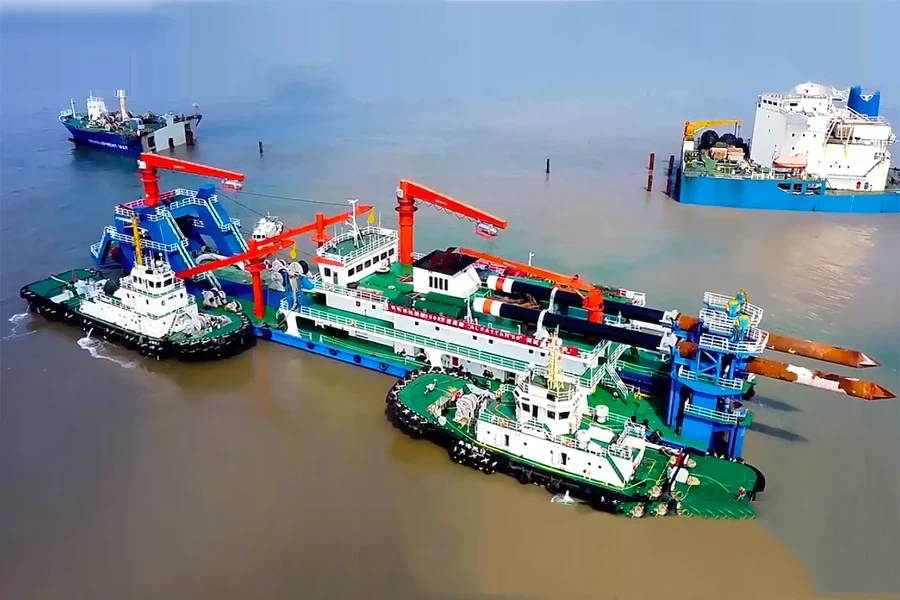
Dredging is the process of digging, removing or recovering materials from the bottom of a water body, which could be a shallow inland waterway or at sea.
Dredging can be carried out for several different reasons:
- to remove an accumulation of silt and sediment that is blocking free movement or free water flow along a waterway,
- to remove material for land reclamation,
- to extract desired material for use elsewhere is construction, such as sand and gravel,
- to recover commercially valuable minerals such as gold.
Dredgers work from a stationary position, recover the materials from that location, and then move forward to the next position. Materials recovered are either sifted and sorted immediately or they are dumped onto a nearby barge or landed area and sorted later.
There are two distinct different mechanisms for dredging, mechanical dredging, and hydraulic suction dredging:
- mechanical dredging uses backhoe diggers, grabbers, or buckets to grab or scoop materials from the bottom.
- hydraulic suction dredging uses hoses and vacuum methods to loosen materials and then sucks them up the pipe for filtering.
Different jobs require different mechanisms, which narrows down the choice of dredger from the many types available. The different methods and types of machines are shown in the following section.
Mechanical dredgers
Mechanical dredgers are typically one of three types, digger or backhoe dredgers, bucket dredgers, grab or clamshell dredgers. They work by scooping up material from the water bed and lifting it up to the surface for sifting and sorting.
Digger or backhoe dredgers
Digger or backhoe dredgers use an excavator-like backhoe boom and scoop that can reach down into the water to dig and scoop materials from the water bed.
Once the floating platform is properly anchored, the backhoe can be used to recover materials and dump them onto a nearby floating barge. The materials will be transported elsewhere for sifting and sorting.
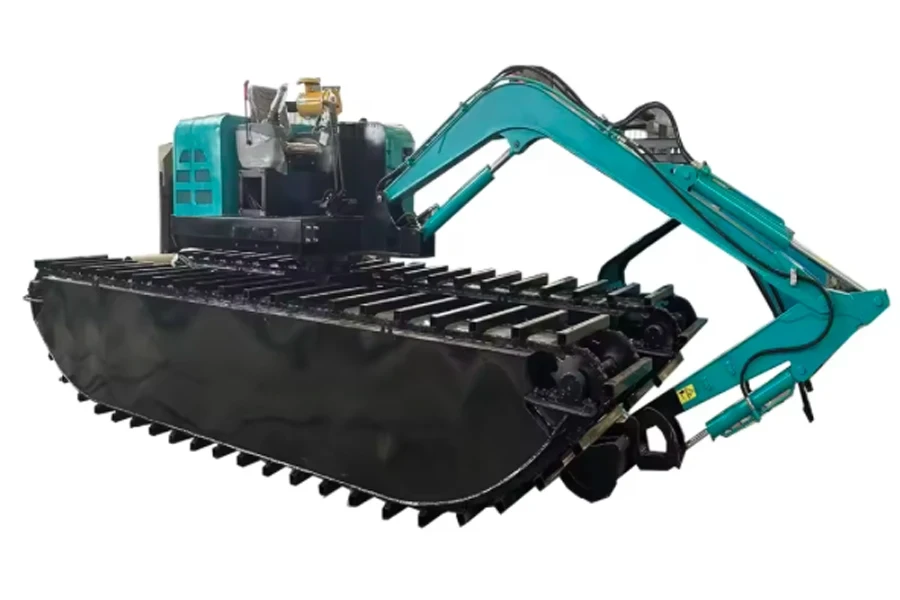
This amphibious backhoe dredger is advertised as suitable for dredging in shallow water as well as for swampy and wet ground. Its pontoon structure and sealed box-shaped track shoe allow it to safely walk and work on silt and water. This model has a working depth of 8 ft (2.5m) and is available for between US$ 22,500 and US$ 24,500.
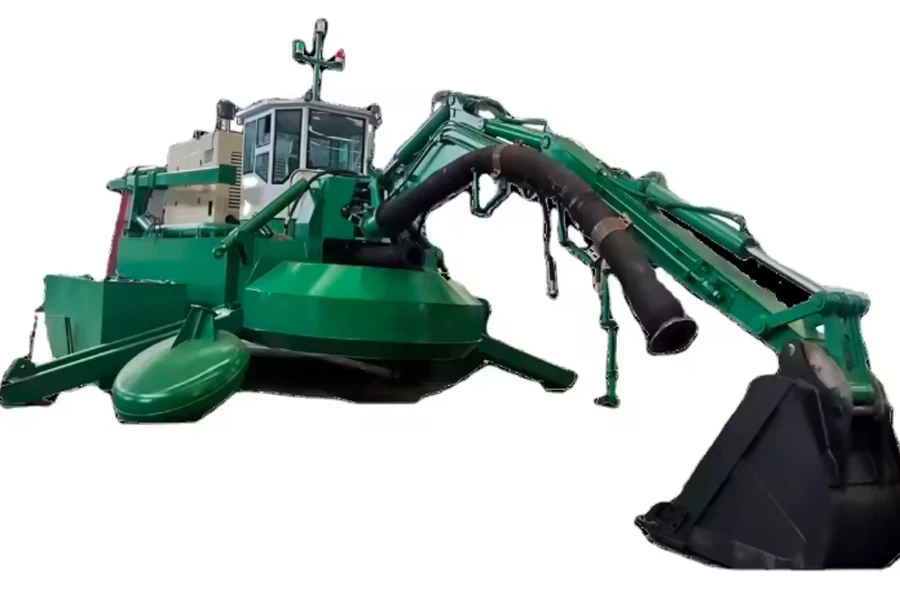
This model of backhoe dredger can be used in shallow water areas, coastal and beach areas, rivers and reservoirs. It is recommended for dredging, reclamation and desilting. The long reach boom gives a digging depth of up to 21.5 ft (6.5m) and this version is available for US$ 160,000.
Bucket dredgers
Bucket dredgers use a rotating chain of buckets on a stationary barge, with a boom that extends down to the water bed. As the buckets move along the boom, each bucket scoops materials from the bottom and then drops the materials onto a sifter on the dredger deck.
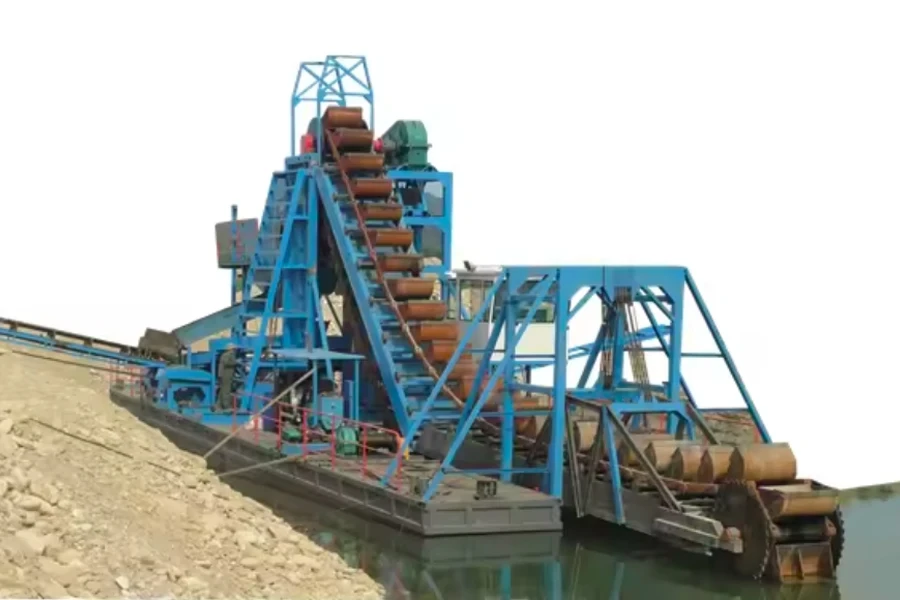
This bucket dredger is a non-self-propelled barge type, with a chain bucket and a box structure hull assembly. It is suitable for sand or gold dredging, and comes with screening and gravity separation equipment. Power is from a diesel generator that drives all electrical power on the dredger. This model has a 65 ft (20m) dredging depth and is available for between US$ 37,000 and US$ 38,000.
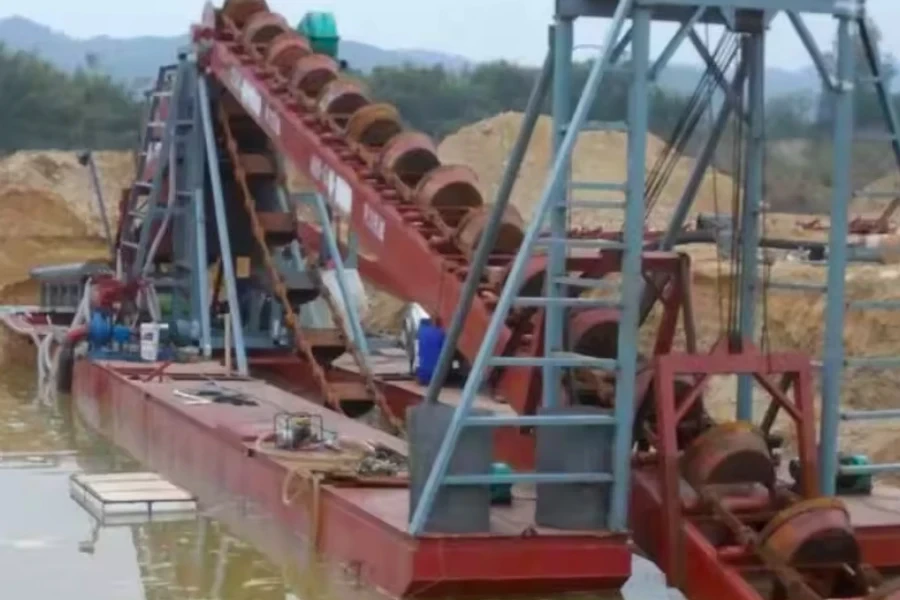
This model of bucket dredger is advertised as suitable for gold and diamond dredging in a variety of sites including ports, rivers, lakes, reservoirs and sea. This model has a dredging depth of 98 ft (30m) and is available for between US$ 10,000 and US$ 15,000.
Grab or clamshell dredgers
Grab dredgers, or clamshell dredgers, use a large bucket that can open and close (like a clamshell), to grab materials from the water bottom. The bucket is lowered by cable and can go to more depth than backhoe or bucket dredgers.
Once the bucket is lowered to the bottom, it mechanically shuts to take a sizable ‘bite’ out of the water bed, and is then pulled back to the surface to deposit the load onto a nearby barge.
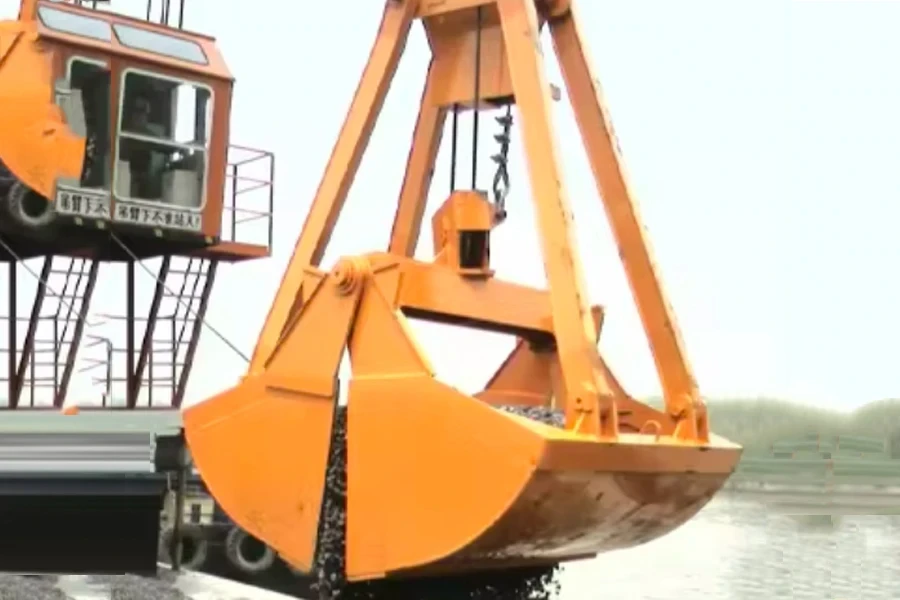
Clamshell buckets can be fitted to crane mounts on dredgers and there is a wide range of clamshell bucket designs available to buy. This bucket model is available for between US$ 500 and US$ 3,000.
Hydraulic dredgers
Hydraulic dredgers work through suction of the materials on the water bed. They disturb and loosen the sand and silt to create a slurry, which is then vacuumed up to the surface through pipe. There are several types that provide suction dredging, with the most common being cutter suction dredgers and suction dredgers.
Cutter suction dredgers
Cutter suction dredgers have a large suction pipe, but also have a rotating cutter fitted at the head of the pipe to dig into the bed, break it up and loosen it to prepare for suction.
This method of breaking up materials makes it very suitable for a dense bottom, or one that is covered with rocks and heavy stones. This cutter breaks up the materials, and then vacuums them up through the suction pipe.
These dredgers operate from a fixed position, and may come with their own power or need to be towed to their location. Once in position, the pipe and cutter are lowered to as much as a 45 degree angle to the river or sea bottom.
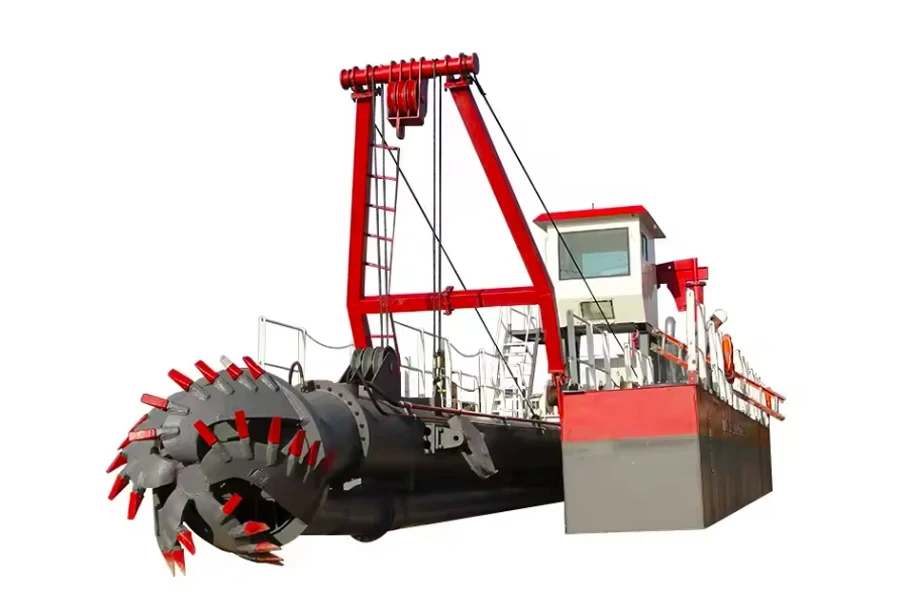
This cutter suction dredger comes in different sizes and pipe lengths that give it a dredging depth or between 26 ft (8m) and 52 ft (16m). The suction pipe has a 2 ft (0.6m) diameter, a 5 ft (1.5m) cutting head and a 20” (0.5m) discharge pipe. It can process dredged sand at a rate of 18,000 ft³/h (500 m³/h). This model can be supplied with or without its own power, and prices range between US$ 27,540 and US$ 110,155.
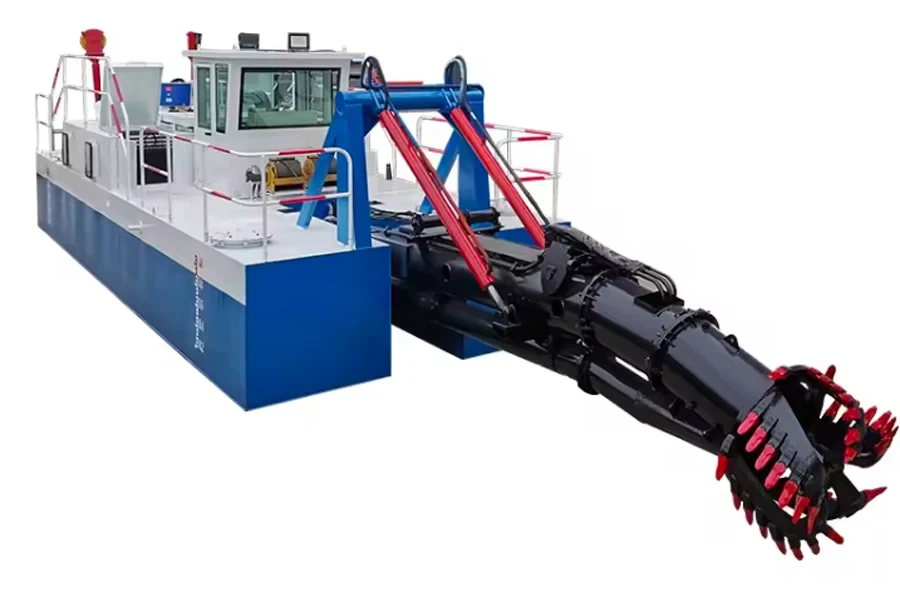
This cutter suction dredger has a dredging depth 32 ft (10m), with a suction pipe of 12” (0.3m) diameter and a 10” (0.25m) discharge pipe. This model can process dredged sand at a rate of 35,300 ft³/h (1000 m³/h), and prices range between US$ 30,981 and US$ 33,735.

A variation on the cutter dredger is the bucket wheel dredger, which replaces the rotating cutter head with a bucket wheel. This still uses the suction method, but uses the bucket teeth to gather materials rather than the cutter teeth to break up the water bed. This model has a dredging depth of 50 ft (15m), and is available for between US$ 570,495 and US$ 611,244.
Suction dredger
Suction dredgers work by using a powerful vacuum-like approach to suck up materials from the water bottom. Unlike the cutter suction dredgers, these do not break up the water bed first, so are best used where the bed is loose sand and silt.
These dredgers work well for reclaiming sand and gravel for use in construction elsewhere. However, they are also popular for dredging gold particles from the water.
The sand and gravel is sifted and passed through a sluice to catch and retain any gold that was collected, while the unwanted sand and gravel is discharged back into the water.
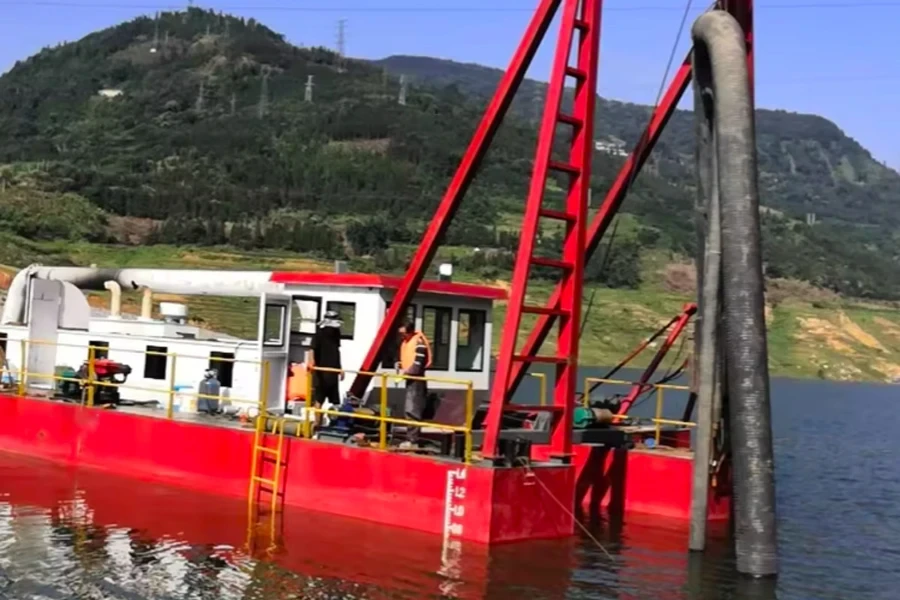
This suction dredger comes with either an 8 (0.2m) or 16” (0.4m) capacity suction pump, and can dredge down to a depth of 115 ft (35m). The suction pump can process between 2,825 ft³/h (80 m³/h) and 18,363 ft³/h (520 m³/h). The price for this model is US$ 85,370.
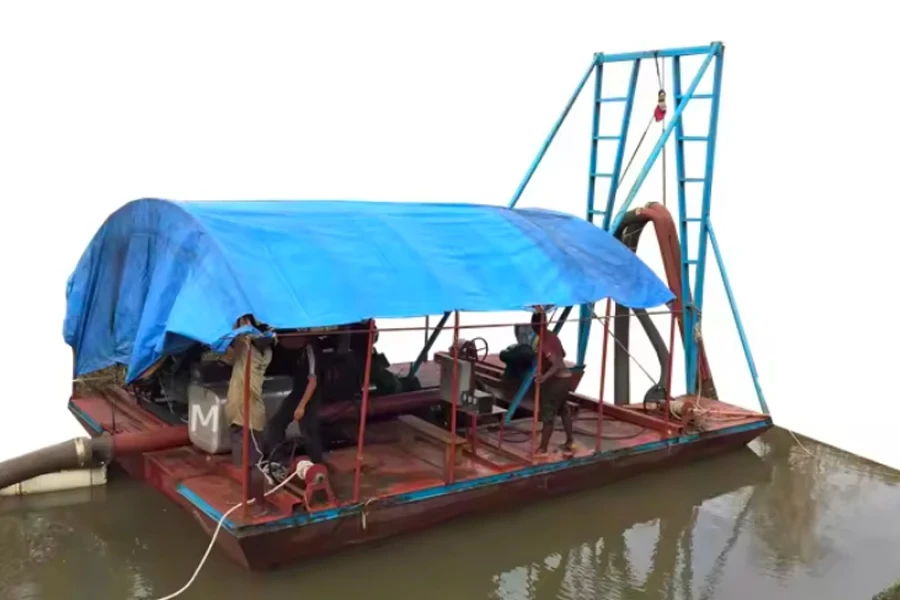
This suction dredger can dredge down to a depth of 66 ft (20m). The suction pump can process sand at a rate of 1,765 ft³/h (50 m³/h). It is recommended for sand or silt, and specifically for materials with no more than 30% stone or gravel content. The price for this model is US$ 10,740.
What to consider in selecting a dredger
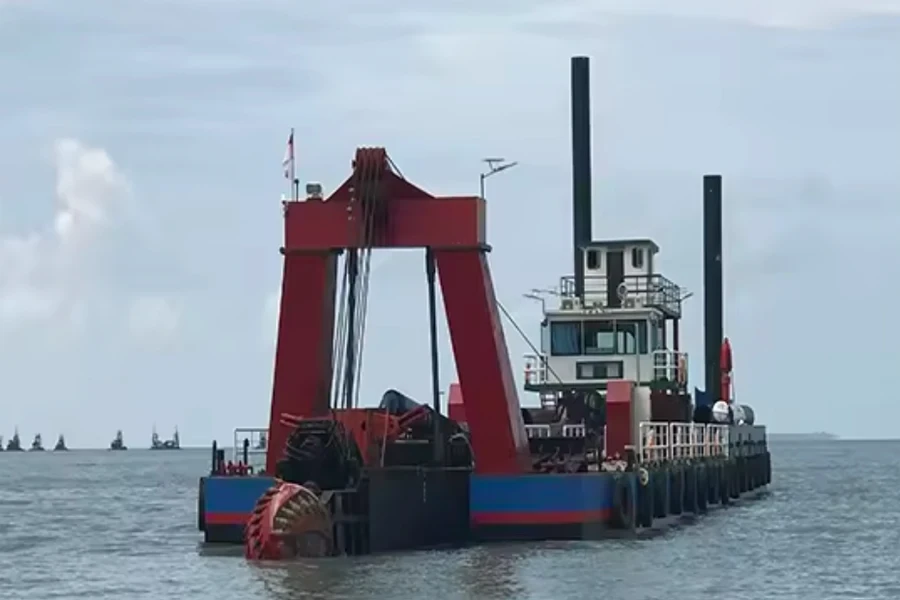
What material is being dredged?
The material to reclaim, and the purpose of the dredging, will very much determine the type of dredger to be chosen.
Where the sea or river bed is dense and hard-packed, with rocks and large stones that cannot easily be scooped or vacuumed, then the primary need will be for a cutter dredger. The water bed will need to be broken up before being reclaimed, and the best way to do that is with a cutter.
Where the requirement is to reclaim sand or gravel, to be used in construction elsewhere, then a few mechanisms can work suitably, including a suction dredger, bucket dredger or backhoe dredger.
Where the dredging is to recover gold or other precious materials, suction dredging is the most common method, with a sifting and sluicing mechanism as the sand and silt is recovered.
For deep excavation dredging, of sand, silt or loose rocks, then grab or backhoe dredgers will work well.
Recovery speed and capacity
Any company working to dredge and process reclaimed materials will be focused on throughput speed, how much can be gathered in an one moment and how much can be processed per hour, typically measured as ft³/h (m³/h).
Most dredgers are static, working from a fixed position, and then get to work on that location. How much they can recover will depend firstly on the type of dredger, and then on the size and power of the dredging equipment.
For mechanical dredgers, the capacity is determined by the size of bucket or grab/clamshell. The larger the bucket, the more sand or gravel that can be scooped in one go. Speed is determined by the mechanical movement of the bucket and operator.
For hydraulic dredgers, capacity is determined by the width of the suction and discharge pipes, and by the power of the pumps to drive the suction. Here is a small selection (from suppliers specifications) of dredging speed compared to suction pipe width. These statistics are not linear, as other factors to consider will be cutting head size, discharge pipe width, and pump power:
| Suction pipe width in inches (meters) | Dredging capacity in cubic ft per hour (cubic meters per hour) |
| 6” (0.15m) | 1,765 ft³/h (50 m³/h) |
| 8” (0.2m) | 2,825 ft³/h (80 m³/h) |
| 12” (0.3m) | 35,300 ft³/h (1000 m³/h) |
| 16” (0.4m) | 18,363 ft³/h (520 m³/h) |
| 24” (0.6m) | 18,000 ft³/h (500 m³/h) |
The potential buyer should discuss options and requirements with the supplier to determine the best dredger type and capacity.
Final thoughts
Dredgers are used to reclaim sand and gravel, remove accumulated silt, and to retrieve precious metals such as gold. Different purposes require different types of dredger with the main types falling into two categories, mechanical and hydraulic.
For the potential buyer, the main considerations will be the required use first, before then selecting the type. Secondary considerations will then be size and power, and expected working depth. For more information on the wide range of dredgers available, check out the Chovm.com showroom.
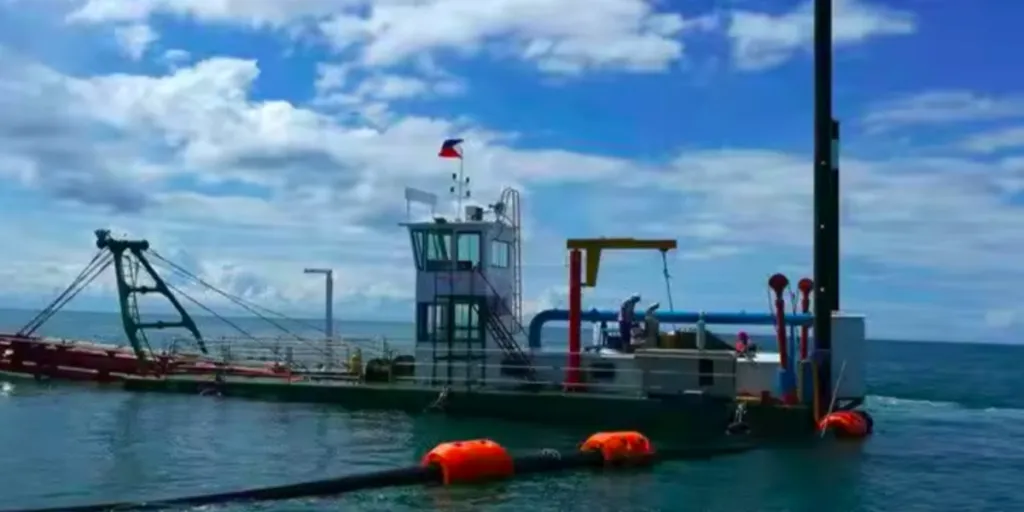




 বাংলা
বাংলা Nederlands
Nederlands English
English Français
Français Deutsch
Deutsch हिन्दी
हिन्दी Bahasa Indonesia
Bahasa Indonesia Italiano
Italiano 日本語
日本語 한국어
한국어 Bahasa Melayu
Bahasa Melayu മലയാളം
മലയാളം پښتو
پښتو فارسی
فارسی Polski
Polski Português
Português Русский
Русский Español
Español Kiswahili
Kiswahili ไทย
ไทย Türkçe
Türkçe اردو
اردو Tiếng Việt
Tiếng Việt isiXhosa
isiXhosa Zulu
Zulu